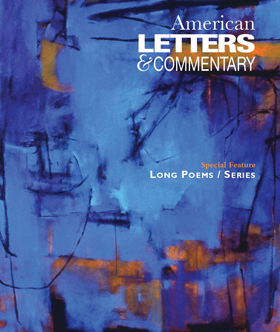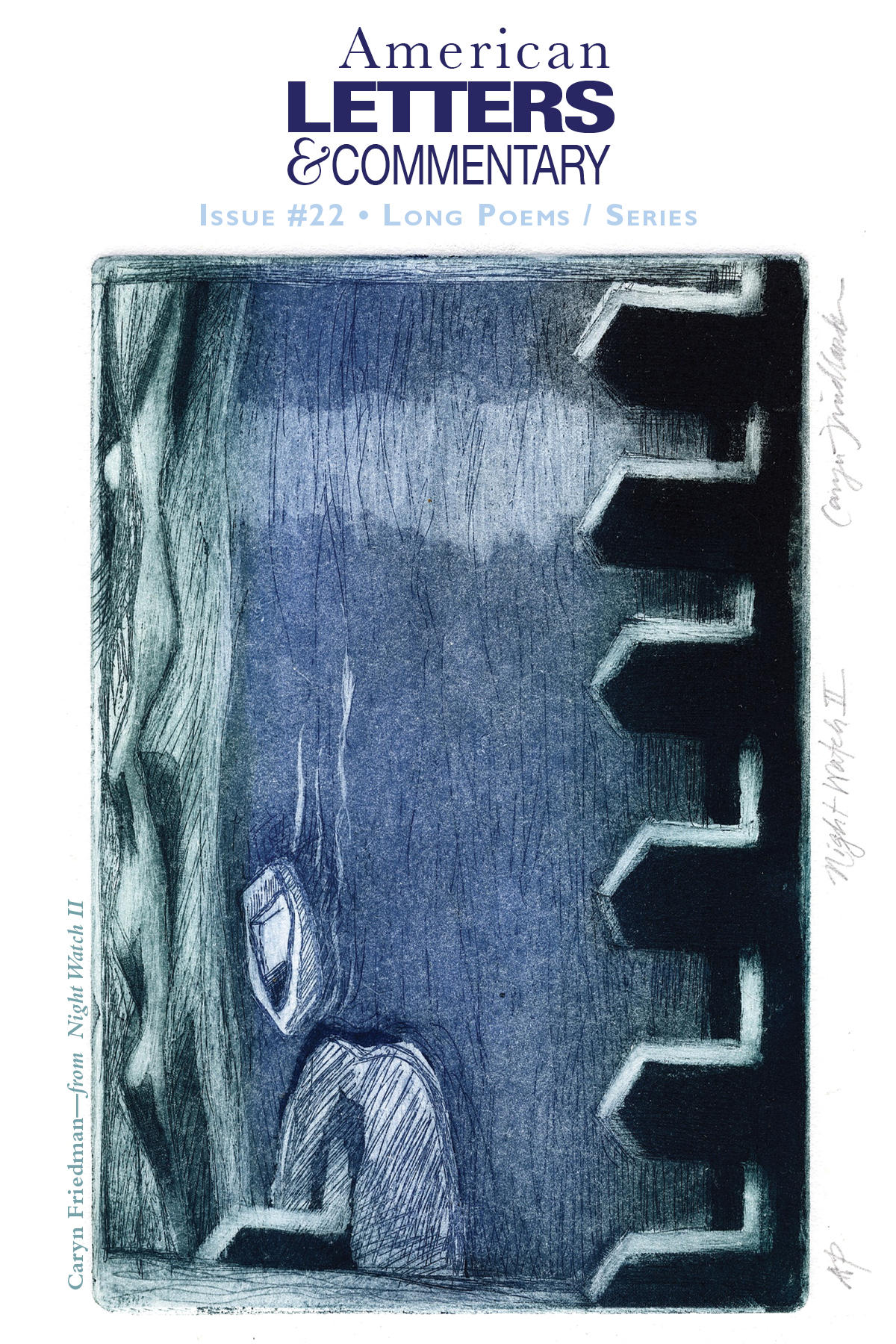
ISSUE #22
Co-Editors
David Ray VanceCatherine Kasper
Editor Emeritus
Anna Rabinowitz
Cover Art
Caryn Friedlander
EOS, 1992
Special Feature
Long Poems / Series

|
Artwork |
|||
Cecily Parks |
Agnes Chase’s Second Book of Grasses |
|||
Laura Goldsteins |
Pond |
|||
Dan Kaplan |
+ |
|||
Megan Kaminski |
white tile walls |
|||
Darin Ciccotelli |
[All birds vaguely destroyed] |
|||
Jenny Gropp Hess |
Etymologist on a Train |
|||
| Sarah Mangold | An Antenna Called the Body Electrical Theories of Femininity How Information Lost its Body Every Man a Signal Tower |
|||
James Meetze |
Dark Art 10 |
|||
| Ailish Hopper | from Emancipation Tests | |||
| Pattabi Seshadri | Effigy of George Washington Effigy of Abraham Lincoln |
|||
| Terence Huber | from Coins from the Coins in Stories | |||
| Jakob Stein | Jonah | |||
| Nathan Hauke | Stray Music | |||
| Alexandra Mattraw | Inside the Construction: Truss Bridge Inside the Construction: Reading Skin |
|||
| Joyelle Mcsweeney | from Charisma | |||
| Rebecca Givens Rolland | The Vine of Somewhere | |||
| Steve Barbaro | Distance and Concentration | |||
|
||||

Kristin Abraham
David Alonzo
Lisa Fishman
Stuart Friebert
Matthew Gagnon
Sara Henning
Alison Hess
Cynthia Hogue
Ruth Ellen Kocher
David McAleavey
Mark McKain
Sally Molini
Brian Mornar
John Olson
Lynne Potts
Kuno Raeber
Matt Reeck
Michael Robins
Frank Rogaczewski
Dan Rosenberg
Morgan Lucas Schuldt
Bret Shepard
C. S. Ward
Keith S. Wilson
Ryo Yamaguchi
Long Poems / Series
In western literary tradition, “The Long Poem” is as ancient as the epic. We associate it with the Beowulf poet, with Homer, and with canonical writers such as Milton, Wordsworth, and Whitman. Moreover, it’s a form much embraced by modernists, as evidenced by Pound’s Cantos, Eliot’s Four Quartets (and arguably The Waste Land ), Hughes’ Montage of a Dream Deferred, Stein’s Tender Buttons, H.D.’s Trilogy, and Williams’ Paterson, to name a few. For literary magazine editors, however, long poems or series can be problematic. Works that are interlinked and lengthy often run up against the financial realities of small press production. Even where money isn’t an issue and editors have plenty of pages to work with, they’re often reluctant to devote too much space to a single author. And so, long poems and series are largely eschewed in favor of work that can fit in the space of a page.
Nevertheless, the long poem/series continues to f lourish. As Lynn Keller explains in, Forms of Expansion: Recent Long Poems by Women (U.Chicago, 1997): “The very institutionalization of the expressive lyric that has obscured the increasing importance of the long poem…has in fact fostered the long poem’s development by heightening poets’ consciousness of the need to seek alternatives if poetry is to regain cultural importance.” The form has been revisited and redefined, hybridized, and expanded, so that the stereotypically “masculine” epic has been given new life and purpose. According to Keller, today “the long poem is, by most accounts, a generic hybrid,” one that often incorporates a variety of forms, including “narrative poems, verse novels, sonnet sequences, irregular lyric medleys or cycles, collage long poems, meditative sequences, extended dramatic monologues, prose long poems, serial poems, heroic epics….”
In this volume, we embrace the celebratory and subversive long poem/series. Some works appear in their entirety, while a great many are excerpted from longer projects. All of them demonstrate the power of this method of thinking and of writing. We are pleased to focus on these “longer” works and encourage our readers to seek out the book-length, complete works of our contributors and to revel in this expansive form.
—Catherine Kasper and David Ray Vance